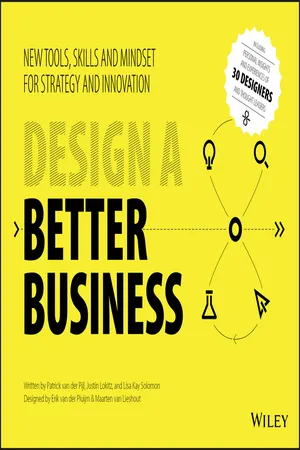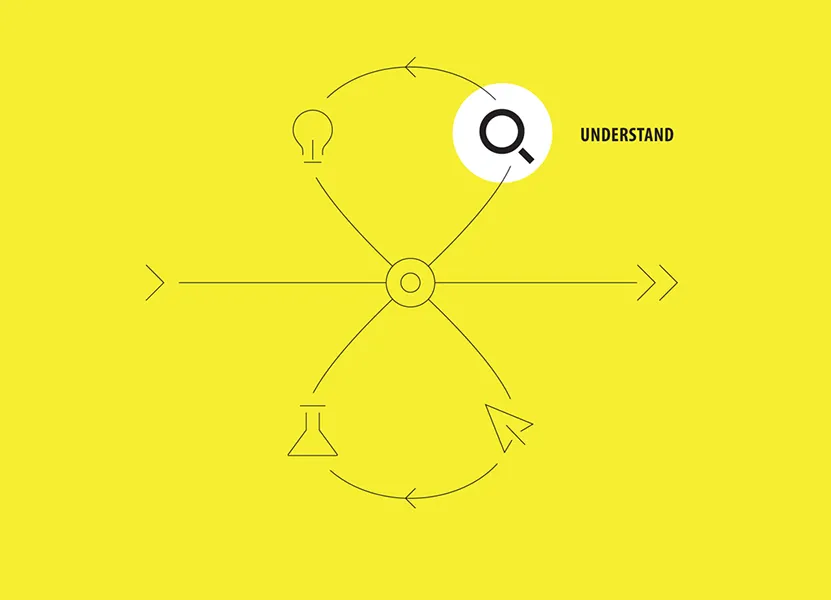![]()
Page 82
Page 83
THE DESIGN JOURNEY UNDERSTAND
INTRO SEEK TO UNDERSTAND
SKILL MASTER OBSERVATION
SKILL MASTER QUESTIONING
CASE WAVIN LOVES PLUMBERS
TOOL CUSTOMER JOURNEY CANVAS
TOOL VALUE PROPOSITION CANVAS
TOOL CONTEXT CANVAS®
TOOL BUSINESS MODEL CANVAS
![]()
Page 84
SEEK TO UNDERSTAND
Whether you’re designing a change for your company or a new product for someone else, the things you develop are for people, inside or outside your organization. Beyond these people exists a broader context as well as your business model. Understand these, and design for success.
WHERE ARE YOU NOW?
As a designer, you must have a complete understanding of the world in which you do business. This is true whether you’re in a startup, a for-profit, or a non-profit. You must know your customer, your overarching economic context (trends, regulations, competition, etc.), and the internal mechanics of your own business. All these comprise your company’s DNA.
Why is this important? The biggest and most effective business changes, strategies, and innovations come from finding the answers hidden in the noise. These may exist outside of your comfort zone. In some cases, it is for good reason. But how will you know what’s out there unless you take the road less traveled and have a look for yourself?
Mastering understanding is the secret sauce of great design. Designers actively leave their comfort zones, exploring and experimenting with things that others may judge as “ineffective” or “useless.” And when they spend time outside of their comfort zones, designers actually create larger and more diverse comfort zones for themselves. Their picture of the world grows richer, and they are more likely to find new and exciting perspectives which inform their points of view.
But exploration is not just about creating new, cool innovations. Exploring your context and your business model will help illuminate your business’s underlying strengths and weaknesses. For example, understanding why your customers also buy from your competitors deepens your understanding of your own business. In fact, your customers’ needs almost certainly are not what you think they are! Deep exploration of your customers, context, and business will bring fresh insights. This, in turn, will give you a better sense of how you might make the future work for you.
WHAT’S YOUR EXCUSE?
Page 85
It may be difficult to get out and explore. It’s frightening to leave the comfort of your office building, where everyone agrees and everyone is “right”. After all, the internal reports look great. This is especially true for large companies: the need to execute perfectly leads to a disproportionately strong current perspective. It becomes easier to execute when you can divide the world quickly into things that “fit” and those that don’t – into “right” and “wrong.” This attitude is easily and dangerously attached to reputation. People who are always right are revered; the ones who dare to be wrong are ostracized. But ask yourself: would you rather be right, or successful? The real cost of exploring usually is minimal: it often boils down to time. Nothing more. Nothing less. To a designer, a situation where everyone agrees and has the same opinion is a huge warning sign. There should be a balance between business as usual and exploring the world outside the business.
DON’T STRESS!
It’s normal to feel uncertainty and stress while transitioning to this new explorative approach. Gathering conflicting and qualitative data requires a new way of thinking. It’s vital to defer any analysis and judgment until after you’ve taken the time to simply observe. It’ll be very tempting to try to immediately fit new information into the existing perspective.
Over time, you’ll learn how to work with the new insights and information. You’ll develop an instinct for going beyond the comfort zone, balancing comfort with being uncomfortable. You’ll experience a constant flow of new information about how the world is affecting your business as well as how your customers behave, what their struggles are, what they like and don’t like. The better (and more) you observe your customers, your context, and your business, the more you’ll inform your own point of view, and the better your design journey will be. It’s that simple.
UNDERSTAND YOUR CUSTOMER
Ultimately, the most important thing to understand is your customers. If you don’t know what value means to them, you can’t stay relevant to them. Assuming you know your customers is really dangerous. Get out of the building and find out what their needs are. You won’t be sorry you did!
UNDERSTAND YOUR CONTEXT
It’s also necessary to understand the field you’re playing on. What are the key drivers that are influencing your business? What are the trends? What are the expected changes in economic and political climate? What are ...


